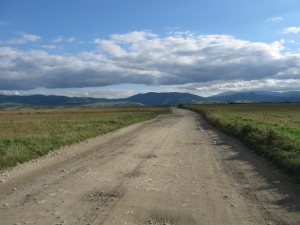Traveling? Keep Back Pain at Home!
Follow these 12 easy suggestions:
While in the Car
- Stretch before long periods of sitting. This will improve circulation and make positioning yourself easier. Prepare yourself for traveling.
- Support your spine. Bring small pillows or specially designed back or neck pillows to give extra support as needed for traveling in the car or on the plane.
- Shift positions and stretch often. When you stretch or vary your position, muscle pain will decrease. Stop the car to fully stretch whenever muscles feel exceptionally tight or fatigued during traveling.
- Squeeze the steering wheel when stopped. When at a red light or stopped in traffic, squeeze and release your hands around your steering wheel to decrease tension in your arms, neck and shoulders. Never do so while traveling. Please concentrate on the road.
On the Plane While Traveling:
- Exercise while traveling. Simply walk in the terminal prior to boarding to keep your muscles from becoming too tense early into the flight.
- Use pillows to support the natural curvature of your spine while traveling.
- Vary positions, move, and stretch. Stand up in your seat, stretch, and walk about the aisles as needed can prevent strain. A few easy stretches, like lifting your arms over your head and reaching up toward the ceiling or bending forward to touch your toes, can do the trick. Or stretch while traveling in the car at while getting gas or using the rest room.
- Place a book or luggage under your feet. Relieve the pressure in your back by keeping your feet raised about 1 foot off the floor while sitting. Traveling in the backseat makes this one easier.
Handling Luggage While Traveling:
- Check bags. The American Chiropractic Association suggests checking all bags that weigh more than five to ten percent of your total body weight. Lifting heavy carry-on items above your head can be an invitation to injury when traveling on a plane.
- Lift smart. When bending to pick up a heavy bag before traveling, stand close to the item, bending from your knees (not the waist), and lift by engaging your leg muscles. Avoid twisting your body as you lift or carry a heavy piece of luggage.
- Shift shoulders often when carrying a bag with a shoulder strap while traveling a distance with luggage.
- Know your strength. Don’t be afraid to use a cart or ask for help when traveling abroad.
Iris Rosenfeld, DC
25255 Cabot Rd Ste 110 Laguna Hills, Ca 92653





